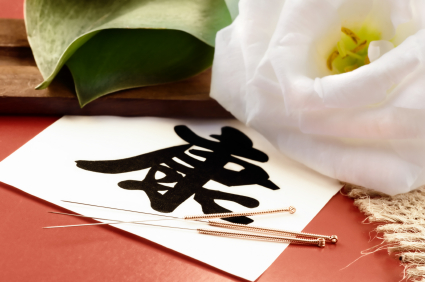Acupuncture
Acupuncture is a holistic system of medicine, which originated in China over 5000 years ago as part of traditional Chinese medicine. Acupuncture is widely practised in China, Korea, Japan and other eastern countries.
Acupuncture began with the discovery that stimulating certain areas of the skin affected the functioning of specific internal organs. It evolved into system of medicine, as the relationship between skin and the organs was better understood and more sensitive ways of stimulation were devised.
From the Chinese medicine perspective, our health is dependent on the body’s vital force (known as Qi), which travels around a series of channels (meridians) between the skin as well as through related internal organs. Acupuncture treatment, by inserting fine needles into specific points along these channels, can restore health by stimulating the body’s natural self-healing abilities.
Treatment
During the initial treatment, I will gather information about your complaints and any treatments to date, your medical history and your personal background and systems (eg. sleep, appetite, digestion etc). I will then read your 12 pulses connected with your energy level and you internal organs. Pulse and tongue diagnoses are an essential part of Chinese medicine. By feeling your pulses and looking at your tongue, I can make an integrated Chinese medicine diagnosis, which is specific to your condition.
During the initial and subsequent sessions, I will mainly use two types treatment. One is the insertion of fine, sterilised stainless steel needles into acupuncture points and the other is the application of a herb called moxa (Artemisiae argyi Folium), which strengthens Qi by warming the acupuncture points. I often combine the two methods of treatment in order to achieve the maximum effect, by tailoring the specific treatment to the patient.
Does it hurt?
Acupuncture needles are much finer than hypodermic needles. You may feel a slight pricking sensation as the needles go through the skin. Many people feel nothing at all. When the needles reach the desired depth (4-5 mm), another sensation can be felt, which is often described as a ‘dull ache’ or a ‘tingling sensation’. This lasts for 1-2 seconds. The needles are then retained usually for 15 - 25 minutes, during which time people often fall asleep.
How many treatments will I need to get better?
This is very much dependent on the needs of each individual. As a general rule, a course of treatment involves six to ten weekly treatments initially. Later treatments can then be spread out to fortnightly or monthly sessions, as your condition improves.
Cupping during an acupuncture session
Cupping is also frequently used as part of the treatment. Cupping is a therapy which entails placing special glass cups (generally on the back and shoulder areas) which use a vacuum to adhere to the skin. Cupping can be very effectively used for treating common colds, alleviating muscular pain and reducing swelling by promoting Qi & Blood. I often apply ‘sliding cupping’ (literally sliding a cup over the muscles), which feels like a deep tissue massage and is very relaxing and soothing.
To book an appointment
Hye-Eun Hills: 077333 67803
MBAcC • MRCHM • BA • BSc
-
 Conditions treated with acupuncture
Conditions treated with acupuncture- Infertility, IVF, IUI support
- Aches & pains including back pain, sciatica, arthritis, headaches, period pains
- ME, chronic fatigue
- Tiredness, anxiety & sleep problems


